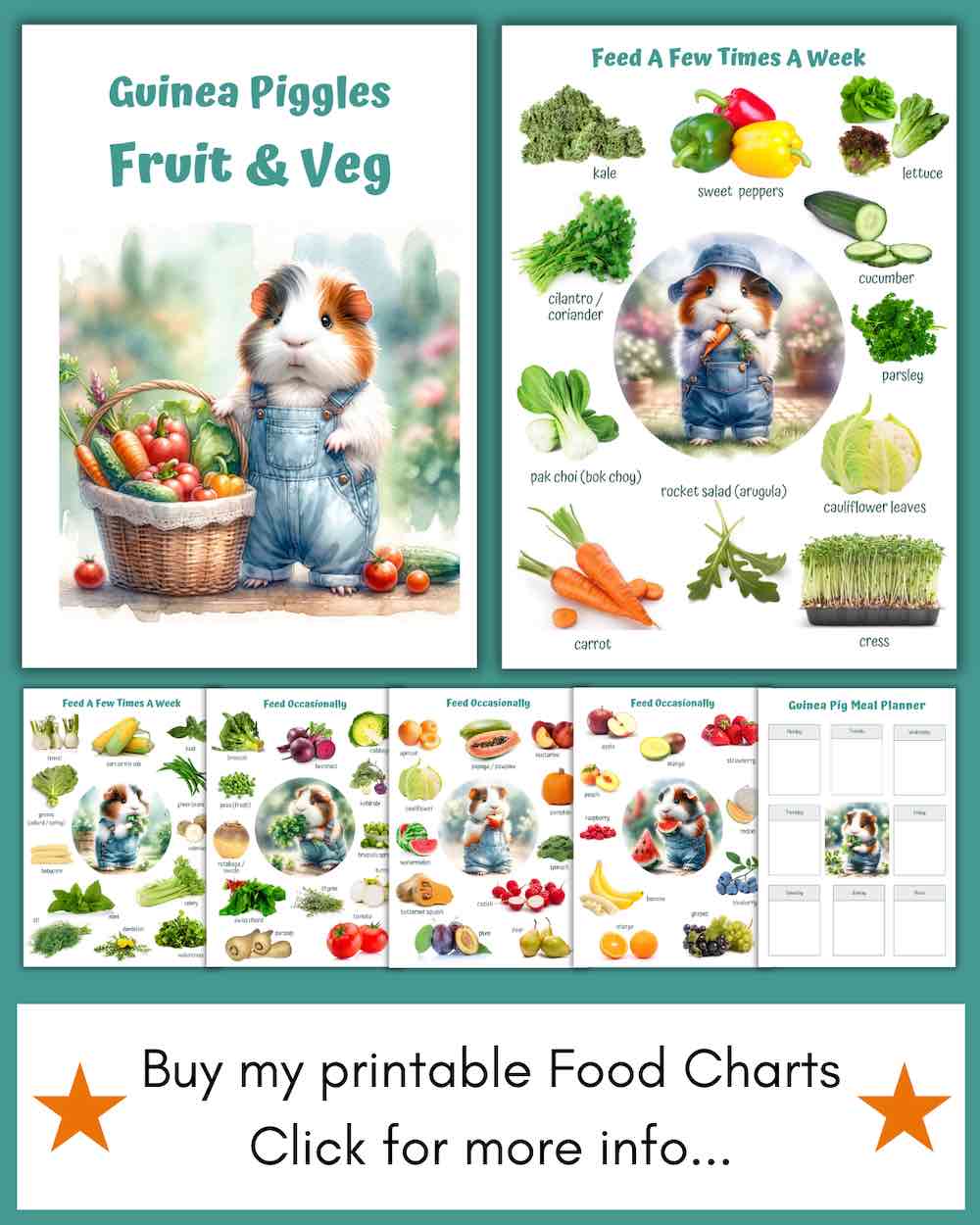Guinea pigs can eat watercress, a leafy green known for its peppery flavour and excellent nutrition. This superfood is rich in vitamins A and C, both of which are essential for your guinea pig’s immune system, eyesight, and overall health.
While not all guinea pigs enjoy its slightly spicy taste, watercress is a healthy vegetable that can be part of their weekly rotation when served in moderation and mixed with other leafy greens.
How to Safely Feed Watercress to Guinea Pigs
- Wash thoroughly — Always rinse watercress well to remove any dirt or pesticides.
- Feed in moderation — A small handful a few times a week is ideal.
- Mix with other vegetables — Combine with milder greens and colourful vegetables to provide balanced nutrition.
- Serve fresh only — Avoid wilted watercress.
Benefits of Watercress for Guinea Pigs
- High in Vitamin C — Supports immune function and prevents scurvy.
- Rich in Vitamin A — Promotes eye and skin health.
- Good Source of Fibre — Helps digestion and maintains a healthy gut.
- Low in Sugar — Safe for regular feeding in small portions.
- Adds Variety — Its peppery flavour makes meals more interesting.
🧠 Quick Fact – Watercress is often called a superfood and is one of the most nutrient-dense vegetables, packed with vitamins, minerals, and antioxidants that support overall health.
🍃 Foraging for Watercress
You can find wild watercress growing naturally near freshwater streams, ponds, and rivers. If you choose to forage it:
- Only pick from clean, flowing water, never stagnant pools.
- Avoid areas downstream from farmland or livestock, as run-off can contaminate the plants.
- Rinse thoroughly under clean water before feeding.
Wild watercress can be a free and nutritious addition to your guinea pigs’ diet if gathered carefully and washed properly. Find out how to safely forage wild plants for guinea pigs →

Nutritional Information
| 🍃 Nutrition | (mg per 100g) |
|---|---|
| Vitamin C | 101 |
| Calcium | 85 |
| Sugar | 0.7 |
| Water | 90.8 |
| Fibre | 3.8 |
| Phosphorous | 31 |
Safe Vegetables
🫑 Bell Peppers → Read the Bell Pepper guide ›
🥬 Bok Choy → Read the Bok Choy (Pak Choi / Chinese Leaf) guide ›
🥦 Broccoli → Read the Broccoli guide ›
🥕 Carrots → Read the Carrot guide ›
🌱 Celeriac→ Read the Celeriac guide ›
🌱 Celery → Read the Celery guide ›
🥬 Collard Greens → Read the Collard Greens guide ›
🌾 Corn on the Cob → Read the Corn guide ›
🥒 Cucumber → Read the Cucumber guide ›
🌼 Dandelion → Read the Dandelion guide ›
🌿 Fennel → Read the Fennel guide ›
🌿 French Beans (Fine Green Beans) → Read the French Beans guide ›
🥬 Kale → Read the Kale guide ›
🥬 Lettuce → Read the Lettuce guide ›
🌿 Spinach → Read the Spinach guide ›
🍅 Tomato→ Read the Tomato guide ›
🍃 Watercress→ Read the Watercress guide ›
Safe Herbs
🌿 Basil → Read the Basil guide ›
🌱 Coriander (Cilantro) → Read the Coriander guide ›
🌿 Dill → Read the Dill guide ›
🌱 Mint → Read the Mint guide ›
🌿 Parsley → Read the Parsley guide ›
Safe Fruits
🍎 Apple →Read the Apple guide ›
🍌 Banana →Read the Banana guide ›
🫐 Blueberries →Read the Blueberries guide ›
🍇 Grapes →Read the Grape guide ›
🍈 Melon →Read the Melon guide ›
🍓 Strawberries →Read the Strawberry guide ›
🍉 Watermelon →Read the Watermelon guide ›
